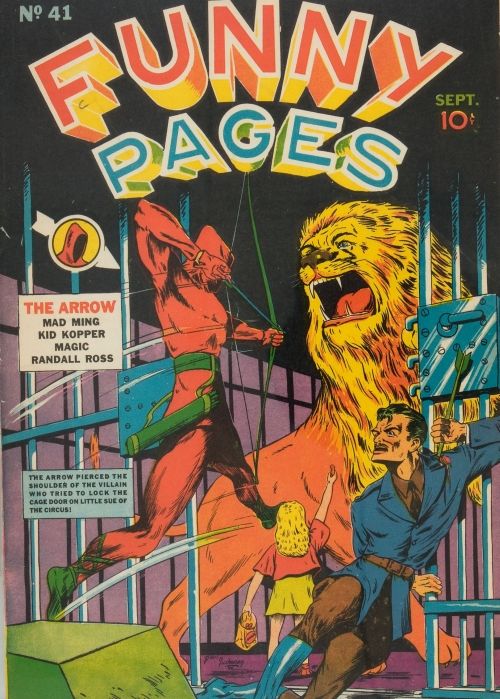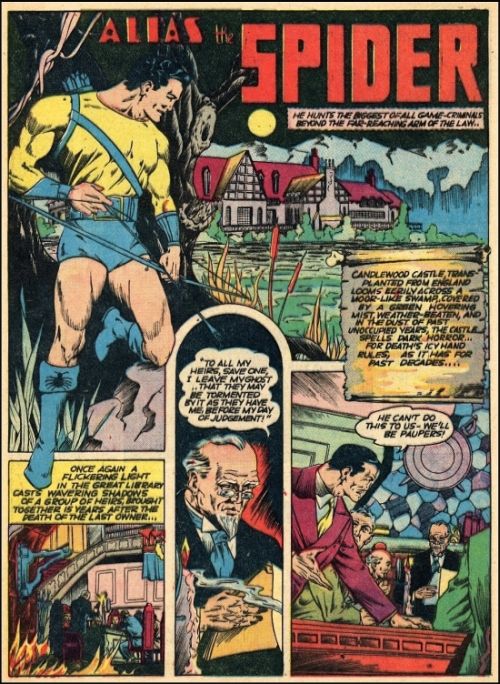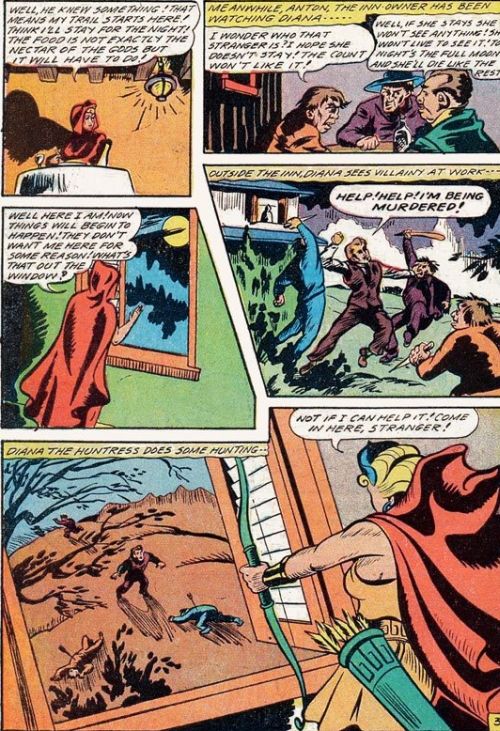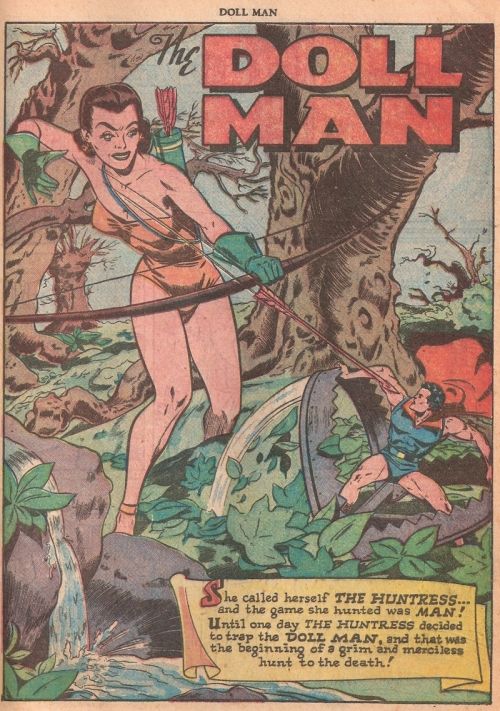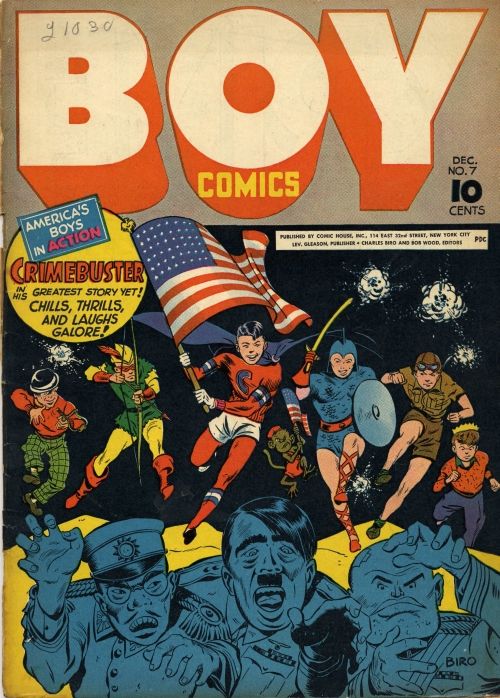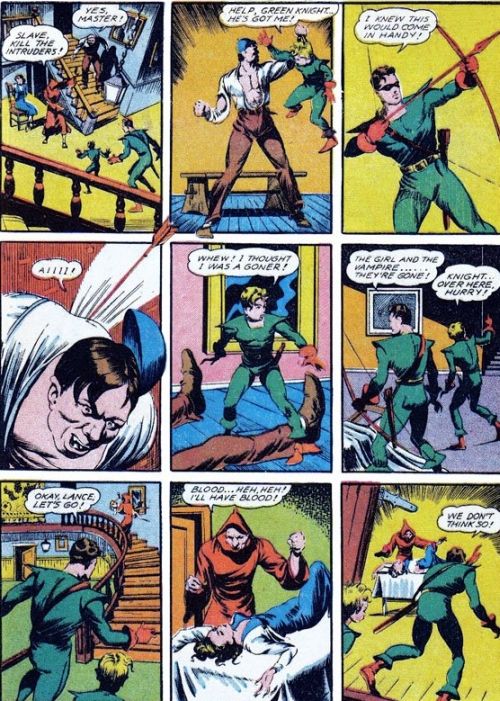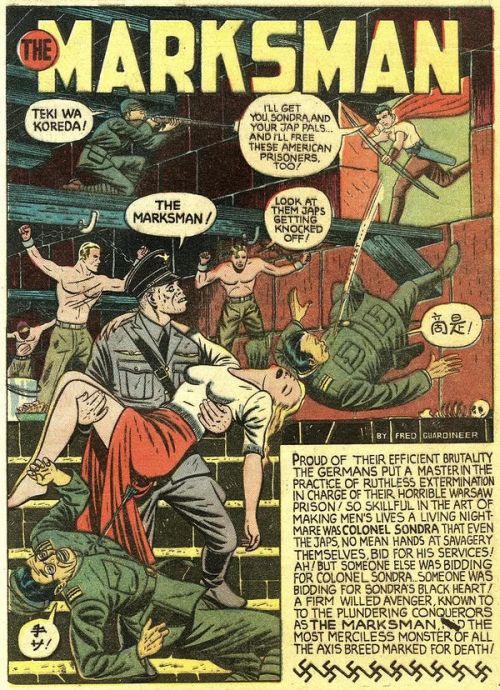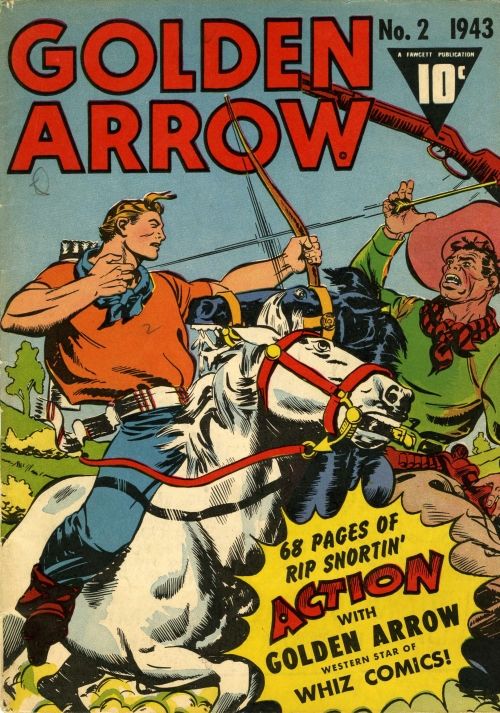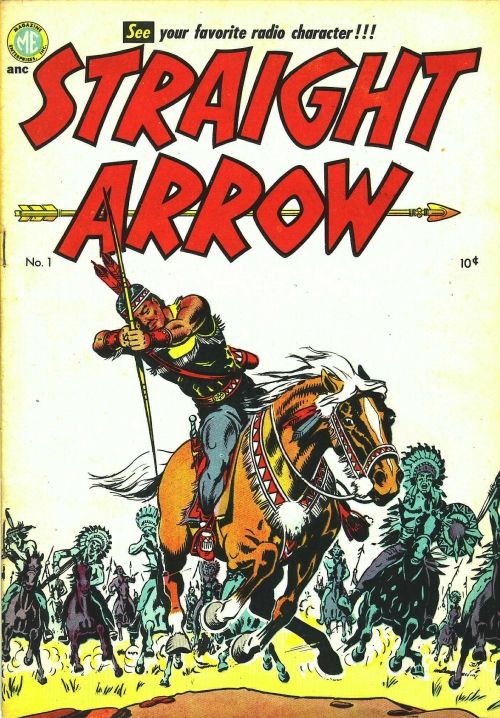If you think that comic book archers begin with Green Arrow and the Arrow Family and end with Hawkeye, you were obviously not buying comics during the Golden Age. Perhaps inspired by the popularity of Errol Flynn’s role as Robin Hood in 1937, archery was a very popular gimmick for costume heroes from 1938 right into the 50s. Let’s take a look at a handful of them:
The very first comic book archer was The Arrow, created by Paul Gustavson in 1938. He was featured on the cover to the final issues of Funny Pages, and also had his own eponymous titles, with the great Bob Lubbers providing some of the artwork. Unfortunately Centaur Publications was one of the first failures of the comic book business, but the Arrow would return in later years.
Gustavson must have had a thing for archers, as one of his next creations was Alias the Spider for Quality Comics. He first appeared in Crack Comics #1 (May, 1940), and was possibly more of an inspiration for Green Arrow than The Arrow. He hung around for three years and disappeared from the comic book world, but was eventually retconned by DC in the 1980s.
The Huntress is a name that has been used time and time again. The character Diana, the Huntress, who first appeared in 1944, was the actual Greek deity. She had numerous powers but chief among them was her skill as an archer, thanks to a magical bow and golden arrow. She appeared as a back-up in all 10 issues of Yellowjacket Comics.
Another character named the Huntress appeared in Doll Man #17 (July, 1948), as another villain to add to Doll Man’s Rogues Gallery. Beautifully drawn by Alex Kotzky, this Huntress was a real threat in the Most Dangerous Game mold. I do not believe that she ever made another appearance, and that’s too bad as the Freedom Fighters’ book would have benefitted from villains like her, rather than all of that stupid in fighting and government crap.
Young Robin Hood was a character with some decent staying power, appearing in nearly 30 consecutive issues of Lev Gleason Boy Comics, beginning with Boy Comics #3 (April, 1942). He even made a few cover appearances along with the other featured characters from that title. Young Robin Hood was a rich Manhattan-based child who channeled his obsession with Robin Hood into a crime (and Axis) fighting career. A bunch of his pals were given Merry Men codenames, and they operated out of a hidden base in Central Park. The great (and greatly misunderstood) Manny Stallman contributed art to this strip.
At first glance, the Green Knight seems to be quite derivative of Green Arrow, but his first appearance in Chesler’s Dynamic Comics #2 (December, 1941) was only one month after Ollie made the scene. The Green Knight is certainly one of the more obscure Golden Age Archer as he only made two appearances. The Grand Comic Database credits Al Plastino on the art here, but credits Charles Sultan on the Green Knight story for the next issue. This looks like Sultan as well. The Green Knight’s alter ego was a wealthy American sportsman. That must have been one of the more popular professions during the 1940s.
Quality Comics’ The Marksmen first appearance in Smash Comics #33 (May, 1942) and was a regular feature in that series until Smash Comics #58 (April, 1945), after which he appears to have been replaced by a character names Spunky. How humiliating! Many of The Marksmen’s adventures were drawn by Fred Guardineer, and important artist recently profiled at Flimsy Rationales .
While not a costumed hero, Fawcett’s Golden Arrow was certainly one of the more important archers of the Golden Age. He first appeared way back in Whiz Comics #2 (February, 1940).He stuck around in that title for 150+ issues, with his final strip coming in the penultimate issue. He also had his own six-issue series, and I believe he made an appearance or two in America’s Greatest Comics. After Fawcett folded, Charlton published a handful of Golden Arrow stories in some of its anthology titles. While some of those were reprints, I think some were from Fawcett inventory.
I’ll end off with Magazine Enterprises’ Straight Arrow, a character who originally appeared on a popular radio show. He was sort of a reverse Scalphunter, as Straight Arrow was a Comanche posing as a white man. Aside from starring in his own series, which lasted 55 issues, he also appeared in ME’s Best of the West and Great Western. His horse Fury even had his own one-shot, something I missed for my installment on horse comics.
There are many other archers, as you may have noticed that I’ve left out all of the Archers of the World encountered by Green Arrow and Speedy as well as Xeen Arrow (although I consider those folks Silver Age). I should also mention The Archer, who served as an early Superman foe. Keep your eyes peeled for bows, arrows and quivers in Golden Age books, and I’ll bet you’ll be surprised by how often they pop up.
For more comic book chat, check out my blog: Seduction of the Indifferent


